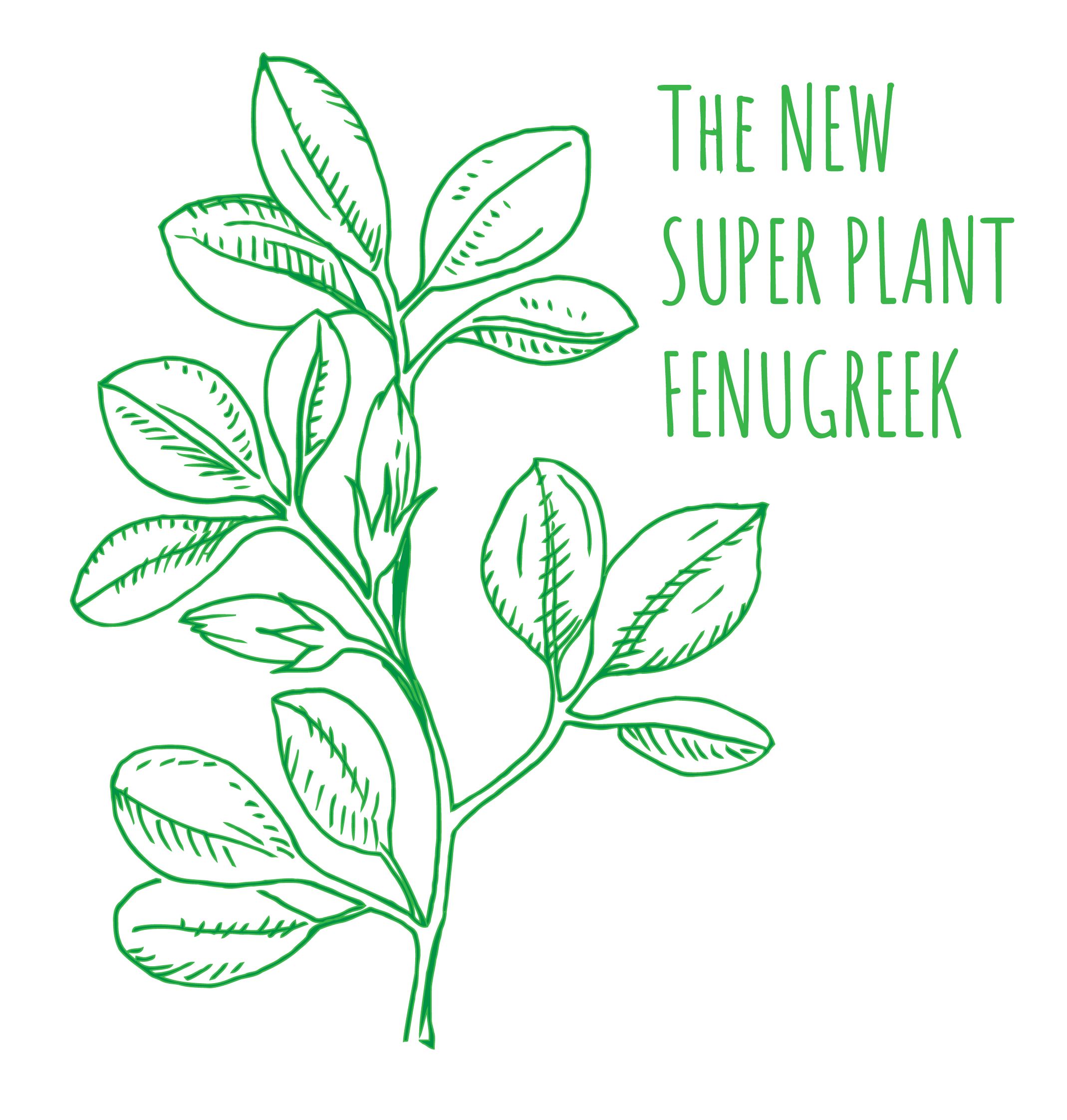The New Super Plant: Fenugreek
Fenugreek Trigonella foenum-graecum Plant
Fenugreek is an impressive plant. It has a multitude of uses.
Trigonella foenum-graecum, more commonly known as Fenugreek and Latin for “Greek hay”, is commonly used in Indian dishes as a spice, herb, and vegetable. It is well-known for its fiber, gum, and other chemical constituents. The soluble-fiber gel formed from fenugreek seed husk acts as a food stabilizer, adhesive, and emulsifying agent. Fenugreek has been traditionally used in Ayurvedic medicine for centuries. The potential health benefits are recently being realized by the western world and are proving to be more than interesting. Once primarily grown in India, it is now grown in Canada.
Fenugreek Seed (husk can be used as a soft, soluble fiber prebiotic)
Let’s break down fenugreek and it’s nutritional value:
Fiber: 3 grams
Protein: 3 grams
Carbs: 6 grams
Fat: 1 gram
Iron: 20% of the Daily Value (DV)
Manganese: 7% of the DV
Magnesium: 5% of the DV
One tablespoon of whole seeds is equal to 35 calories.
Heartburn Relief with Fenugreek
Fenugreek is proving to have positive results in heartburn relief.
Fenugreek husk has been shown to be beneficial to reduce heartburn symptoms. A clinical study showed that after 2 weeks of ingesting fenugreek (30 minutes before eating) matched the effects of antacid medication. While antacid can disrupt your stomach acid production, fenugreek does not.
How does fenugreek block heartburn and support a healthy digestive system? It’s simple. The fenugreek seed is 25% dietary fiber. This fiber forms a soft, water-soluble gel that creates a barrier between your stomach acids and your digestive tract.
Antidiabetic Properties of Fenugreek
One study (2) involving people with Type 1 diabetes appeared to have healthier blood levels after eating fenugreek powder with lunch and dinner for 10 consecutive days. This study showed improvement in cholesterol levels, as well.
Another study (3) showed a controlled group of non-diabetic people who took fenugreek experienced a 13.4% reduction in blood sugar levels after four hours of ingesting.
First isolated in Fenugreek, a unique amino acid - 4-Hydroxyisoleucine – has been found in the graecum seeds in a good amount and may be the key mechanism to control metabolic and nutritive syndromes.
Fenugreek as Appetite and Weight Control
Weight control and Fenugreek
Fenugreek has been used in traditional medicines for metabolic purposes while reducing appetites. There are 3 studies that show value – including reducing fat intake by 17%. (4) (5) (6)
Cholesterol Levels
There is a possibility that fenugreek can also help support healthy cholesterol and triglyceride levels. (7)
Fenugreek for Health
Nature has proven time and time again to be the better choice. Fenugreek is a one-of-a-kind plant with a lengthy background in traditional medicine, that is looking more and more positive. While the fenugreek studies continue, the positive future of fenugreek looks bright on many levels. From lowering cholesterol to blocking stubborn heartburn, fenugreek is something special.
Chemical constituents of fenugreek:
Alkaloids (Trimethylamine, Neurin, Trigonelline, Choline, Gentianine, Carpaine, Betain)
Amino acids (Isoleucine, 4-Hydroxyisoleucine, Histidine, Leucine, lysine, l-tryptophan, Arginine)
Saponins (Graecunins, fenugrin B, fenugreekine, trigofoenosides A–G)
Steroidal sapinogens (Yamogenin, diosgenin, smilagenin, sarsasapogenin, tigogenin, neotigogenin, gitogenin, neogitogenin, yuccagenin, saponaretin)
Flavonoids (Quercetin, rutin, vitexin, isovitexin)
Fibers (Gum, neutral detergent fiber)
Lipids (Triacylglycerols, diacylglycerols, monoacylglycerols, phosphatidylcholine phosphatidylethanolamine, phosphatidylinositol, free fatty acids)
And Other (Coumarin, lipids, vitamins, minerals. 28% mucilage; 22% proteins; 5% of a stronger-swelling, bitter fixed oil)
(1) https://pubmed.ncbi.nlm.nih.gov/20623611/
(2) https://pubmed.ncbi.nlm.nih.gov/2194788/
(3) https://pubmed.ncbi.nlm.nih.gov/11370345/
(4) https://pubmed.ncbi.nlm.nih.gov/19353539/
(5) https://pubmed.ncbi.nlm.nih.gov/19809809/
(6) https://pubmed.ncbi.nlm.nih.gov/20020282/
(7) https://pubmed.ncbi.nlm.nih.gov/9175175/





